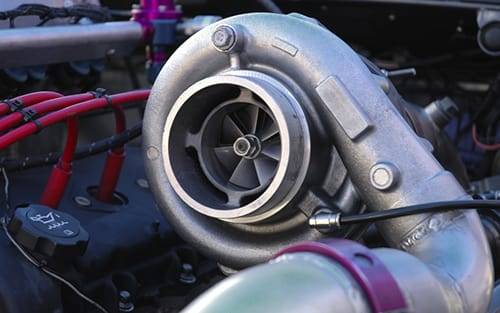Do Turbocharged Cars Require More Maintenance?


Do turbocharged cars require more maintenance? It depends on the type of maintenance. Turbocharged engines will require more frequent oil changes and fresh spark plugs, though turbo engines typically don’t require additional service compared to naturally aspirated engines.
Related: How Often Should I Replace My Spark Plugs?
Here are some examples: Dodge advises changing the spark plugs on the 2013 Dart’s turbocharged 1.4-liter four-cylinder every 30,000 miles, compared with every 100,000 miles for the 2.0- and 2.4-liter naturally aspirated engines. Dodge does not post a schedule for oil changes, instead telling owners to have it done based on an oil-change indicator system that monitors how many short trips you make, outside air temperatures and other driving conditions.
On the 2.4-liter naturally aspirated four-cylinder used in the Hyundai Sonata and Santa Fe, Hyundai says to change the oil every 7,500 miles or at least once a year. With the turbocharged 2.0-liter, Hyundai says to do the first oil change after 3,000 miles or six months and then every 5,000 miles or six months. Spark plug changes also are more frequent on the turbo 2.0-liter: every 45,000 miles or three years versus 105,000 miles or seven years on the 2.4-liter engine.
Those are the only turbo maintenance differences Dodge and Hyundai mention for their turbocharged engines. Turbo models may have additional requirements, such as more frequent transmission fluid changes, but the real difference may be in how the turbocharged versions are driven. Owners who can’t resist using the additional horsepower may, over time, create repair issues. Flooring the throttle on a regular basis puts more stress on the engine, transmission, tires, suspension and, ultimately, the brakes.
Placing an aftermarket turbo kit on your car is also an option, particularly for those owners interested in performance and less concerned with fuel economy. It’s important to note that many turbo kits will void a vehicle’s warranty, so be wary of that before purchasing and installing one.
High-performance upgrades like a turbo kit usually require upgrades to associated parts of the vehicle, such as the intercooler and exhaust. These will obviously add to the cost of the upgrade, both in terms of the cost of the parts and the cost of labor if professionals handle the installation. Be sure to follow any recommended maintenance schedules recommended by the new turbocharger or other additional parts, as well.
Cars.com’s Editorial department is your source for automotive news and reviews. In line with Cars.com’s long-standing ethics policy, editors and reviewers don’t accept gifts or free trips from automakers. The Editorial department is independent of Cars.com’s advertising, sales and sponsored content departments.

Former Assistant Managing Editor-News Matt Schmitz is a veteran Chicago journalist indulging his curiosity for all things auto while helping to inform car shoppers.
Featured stories




